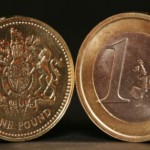Gold snapped 10 straight days of losses on Thursday but downside risk remained intact, with gold-backed ETFs continuing to liquidate and another bit of US data backing the case of a robust economic recovery.
Gold futures for delivery in August traded 0.49% higher at $1 096.9 per troy ounce at 06:38 GMT, shifting in a daily range between $1 098.6 and $1 092.3. The contract slid 1.10% on Wednesday to $1 091.5, a third straight daily drop, having plunged to a five-year low of $1 080.0 on Monday. The price is down 3.1% so far this week, which would be a fifth consecutive weekly drop.
The yellow metal has fallen out of favor with investors as the Federal Reserve prepares to raise borrowing costs in the US for the first time since 2006, while a key safe-haven support was lost last week after Greece agreed to creditors’ terms for reforms in exchange for a third bailout.
The rate hike expectations, coupled with upbeat US economic data that back the case of an increase in borrowing costs, have sent the dollar soaring against a basket of major trading peers, although it did soften a bit this week.
Data on Wednesday showed that home resales in the US in June rose at a faster pace than projected to the highest in almost 8-1/2 years, while a weekly report by the Labor Department today will likely show that initial jobless claims inched down last week.
The US dollar index for settlement in September traded 0.22% lower on the day at 97.510 at 06:41 GMT, shifting in a daily range of 97.635 – 97.395. The contract rose 0.3% on Wednesday to 97.722 but is down 0.4% for the week. It rose to a 3-month high of 98.310 on Monday.
Fed Chairwoman Janet Yellen reiterated in her testimony before US Congress last week that the central bank remains on track to raise rates this year for the first time in nearly a decade. Her comments were in line with the FOMC’s most recent policy statement and a speech she held on July 10th when she underscored a continued weakness in the US labor market but also expressed confidence that the US economy will continue to grow steadily in 2015, helping improve labor conditions.
Investors tend to turn bearish on gold at times of economic growth and rising interest rates as the precious metal yields returns only through price gains, while other instruments that pay interest, such as bonds, tend to become more attractive.
“A lot of people have held gold as insurance or as a hedge against geopolitical risk, and we found that trade seems less effective over the last few years,” said for Bloomberg Jim Tassoni, chief investment officer at Regal Investment Advisors in Kentwood, Michigan. “Gold has no dividends and no yield, and that presents a lot of opportunity cost.”
However, the low prices are also expected to boost physical demand, with the US Mint and the Royal Canadian Mint reporting a significant increase in sales of coins. Speculative investors who seek cheap valuations might also find the current price level attractive and add to positions, although the general sentiment, reflected largely by the behavior of gold-ETFs, remains definitively bearish.
“It is going to be foolish to be a gold bull right now. The gold bugs would have to wait for their day, but equally I dont think it is going to be a complete collapse from here either,” said for CNBC Vishnu Varathan, senior economist at Mizuho Bank.
Assets in the SPDR Gold Trust, the biggest bullion-backed ETF, fell for a fifth straight day on Wednesday, shedding 2.38 tons to 687.31 tons, the lowest since September 2008. Holdings in the fund have shrunk by little over 49% since peaking in December 2012 at 1353.35 tons.
Pivot points
According to Binary Tribune’s daily analysis, August gold’s central pivot point on the Comex stands at $1 093.1. If the contract breaks its first resistance level at $1 100.7, next barrier will be at $1 109.8. In case the second key resistance is broken, the precious metal may attempt to advance to $1 117.4.
If the contract manages to breach the S1 level at $1 084.0, it will next see support at $1 076.4. With this second key support broken, movement to the downside may extend to $1 067.3.
In weekly terms, the central pivot point is at $1 140.3. The three key resistance levels are as follows: R1 – $1 150.5, R2 – $1 169.1, R3 – $1 179.3. The three key support levels are: S1 – $1 121.7, S2 – $1 111.5, S3 – $1 092.9.





